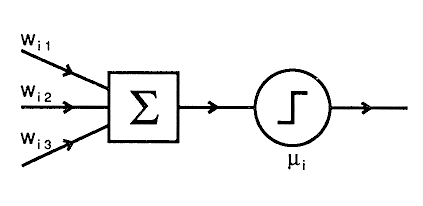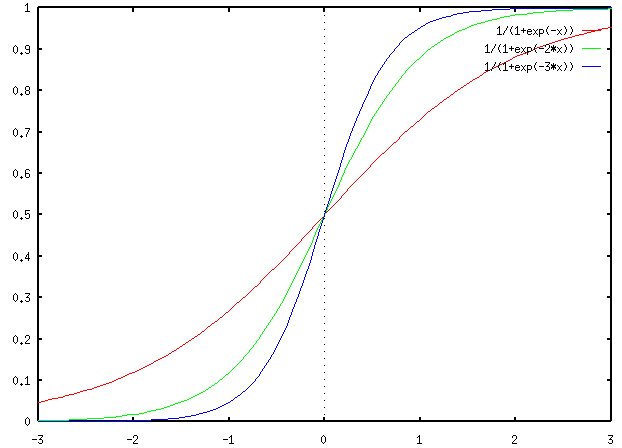
Whether and how much a neuron is excited or inhibited depends on the synaptic
stimulations it receives from other neurons. The intensity of each synaptic
stimulation is in turn determined by the level of excitation (or inhibition)
of the neuron transmitting the signal and the synaptic connectivity between the
transmitting and receiving neurons. This process can be modeled mathematically by

If the activation level ai is higher than the threshold represented by
![]() ,
the receiving neuron is excited to generate action potentials that
travel along its axon to other neurons down stream. The intensity of this output
signal is a function of the activation
,
the receiving neuron is excited to generate action potentials that
travel along its axon to other neurons down stream. The intensity of this output
signal is a function of the activation


In some other mathematical models for a single neuron, an sigmoidal function is used as the function f(a):
